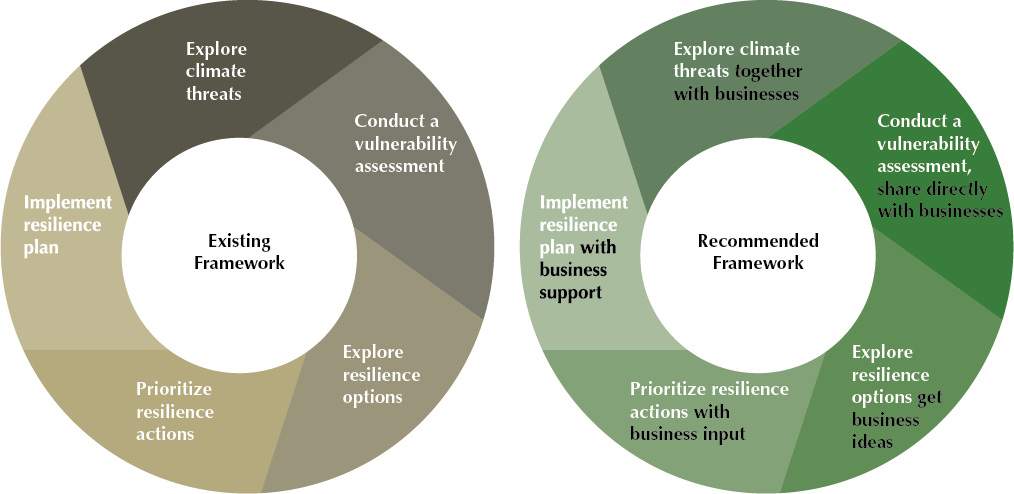The impacts of climate change are being felt today – including more frequent and intense storms, heat waves, droughts, and rising sea level. These impacts take a human and economic toll on cities and the businesses operating in them. Despite the common threat, little guidance exists for how the public and private sectors can work together to prepare.
To address that gap, C2ES, in partnership with Bank of America created a Guide to Public-Private Collaboration on City Climate Resilience Planning. The guide outlines 13 recommended actions for city planners to invite and promote collaboration with businesses on climate resilience.
Working together makes sense because both public and private stakeholders want to see economic growth in their communities. Extreme weather events have caused more than $1 trillion in damage to the U.S. economy since 1980, and the intensity of these events is expected to worsen because of manmade climate change.
Storms can be particularly devastating for small businesses. The Hartford found 52 percent of small businesses affected by Hurricane Sandy in 2012 lost sales or revenue, and 25 percent of these businesses had to slow down or stop hiring.
C2ES brought together local government and business officials in Kansas City, Mo.; Miami Beach, Fla.; Phoenix; and Providence, R.I., to assess each city’s climate preparedness and prioritize resilience needs. Despite differences in each city’s geography, size, climate threats, and economic make-up, we found common insights into how to best foster city-business collaboration.
- Resilience planning should be an extension of existing programs and partnerships. It requires involvement of officials in multiple city departments.
- If cities demonstrate to businesses that climate resilience planning is a key priority, it’s more likely businesses will devote the resources to collaboration.
- Businesses respond to data. By working with partners to find localized data on climate threats and vulnerabilities, cities can help articulate the business case for climate resilience planning.
- ‘Business’ is not a monolith, and city climate resilience planners will need to tailor their approach. Small businesses, in particular, have unique needs.
- Innovative financing can help promote collaboration. While not all climate resilience strategies will require additional funds, some will. The private sector is more likely to collaborate when they see that the city is committed to exploring all options for financing the steps in the climate resilience plan.
As the diagram below shows, business collaboration can be a part of every step of existing climate resilience planning frameworks.

